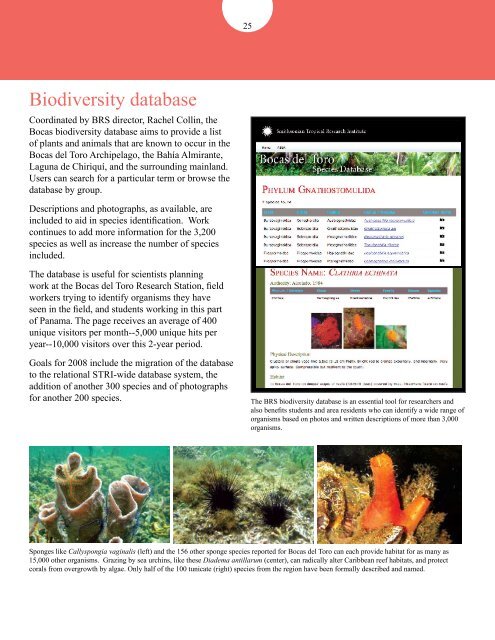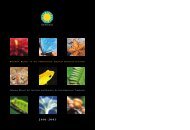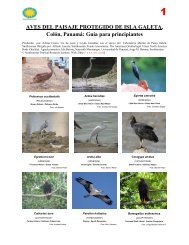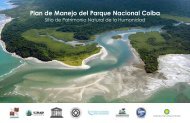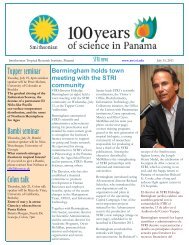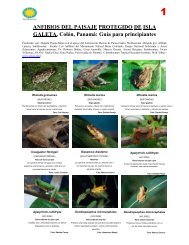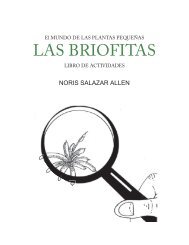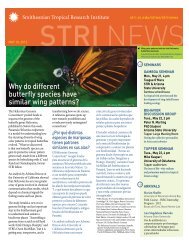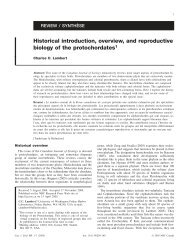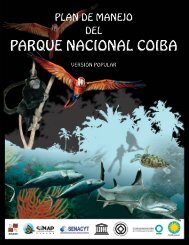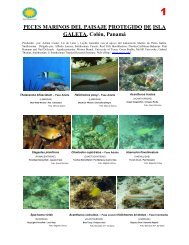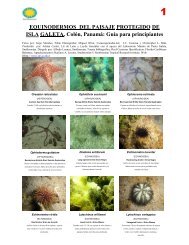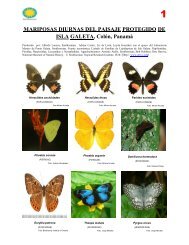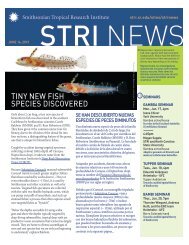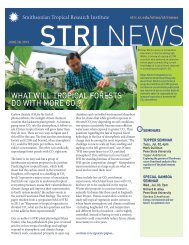Bocas del Toro Research Station - Smithsonian Tropical Research ...
Bocas del Toro Research Station - Smithsonian Tropical Research ...
Bocas del Toro Research Station - Smithsonian Tropical Research ...
Create successful ePaper yourself
Turn your PDF publications into a flip-book with our unique Google optimized e-Paper software.
Biodiversity database<br />
Coordinated by BRS director, Rachel Collin, the<br />
<strong>Bocas</strong> biodiversity database aims to provide a list<br />
of plants and animals that are known to occur in the<br />
<strong>Bocas</strong> <strong>del</strong> <strong>Toro</strong> Archipelago, the Bahía Almirante,<br />
Laguna de Chiriquí, and the surrounding mainland.<br />
Users can search for a particular term or browse the<br />
database by group.<br />
Descriptions and photographs, as available, are<br />
included to aid in species identification. Work<br />
continues to add more information for the 3,200<br />
species as well as increase the number of species<br />
included.<br />
The database is useful for scientists planning<br />
work at the <strong>Bocas</strong> <strong>del</strong> <strong>Toro</strong> <strong>Research</strong> <strong>Station</strong>, field<br />
workers trying to identify organisms they have<br />
seen in the field, and students working in this part<br />
of Panama. The page receives an average of 400<br />
unique visitors per month--5,000 unique hits per<br />
year--10,000 visitors over this 2-year period.<br />
Goals for 2008 include the migration of the database<br />
to the relational STRI-wide database system, the<br />
addition of another 300 species and of photographs<br />
for another 200 species.<br />
Sponges like Callyspongia vaginalis (left) and the 156 other sponge species reported for <strong>Bocas</strong> <strong>del</strong> <strong>Toro</strong> can each provide habitat for as many as<br />
15,000 other organisms. Grazing by sea urchins, like these Diadema antillarum (center), can radically alter Caribbean reef habitats, and protect<br />
corals from overgrowth by algae. Only half of the 100 tunicate (right) species from the region have been formally described and named.<br />
25<br />
The BRS biodiversity database is an essential tool for researchers and<br />
also benefits students and area residents who can identify a wide range of<br />
organisms based on photos and written descriptions of more than 3,000<br />
organisms.


